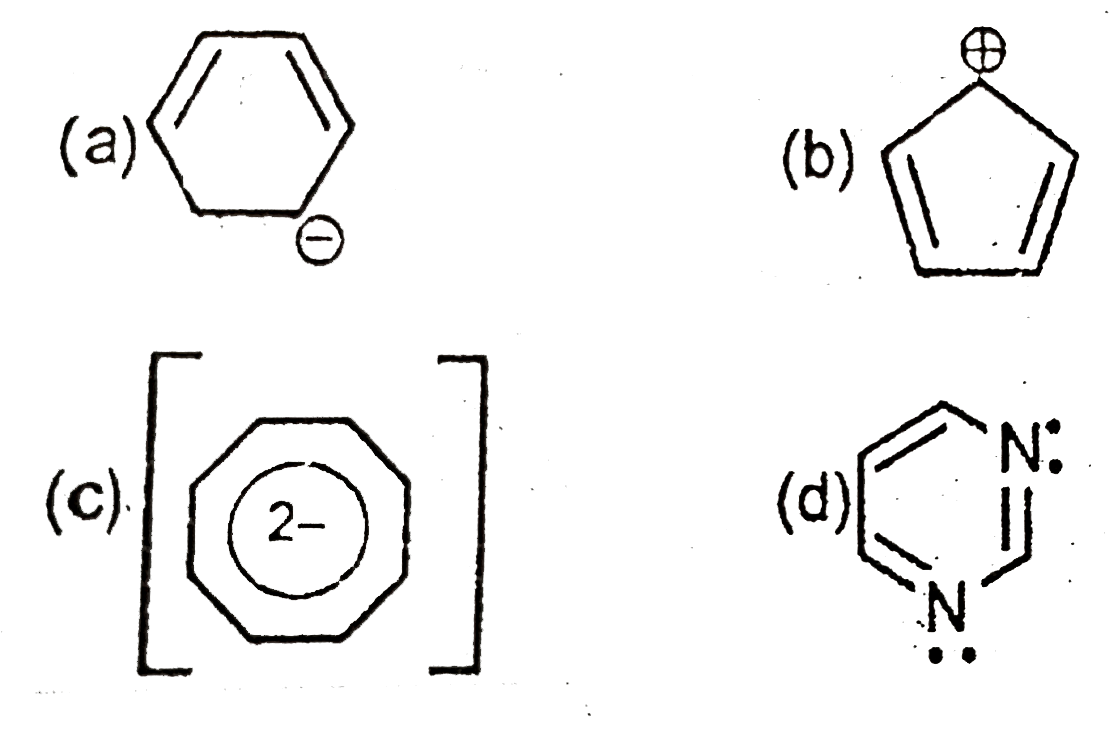Why are naphthalene and anthracene regarded as aromatic compounds?
To understand why naphthalene and anthracene are regarded as aromatic compounds, we need to analyze their structures and properties based on the criteria for aromaticity.
1. Definition of Aromatic Compounds:
Aromatic compounds are defined by three main criteria:
- The compound must be cyclic.
- The compound must be planar.
- The compound must follow Huckel's rule, which states that it should have 4n+2 π (pi) electrons, where n is a non-negative integer.
2. Structure of Naphthalene:
- Naphthalene consists of two fused benzene rings.
- Each carbon atom in naphthalene is sp² hybridized, which allows for the formation of a planar structure.
- The total number of π electrons in naphthalene is 8 (since each benzene ring contributes 6 π electrons, but due to fusion, there are shared electrons).
- To check if it follows Huckel's rule:
- For naphthalene, n=2 gives 4(2)+2=10. Since naphthalene has 8 π electrons, it does not strictly follow Huckel's rule but is still considered aromatic due to its stability and resonance.
3. Structure of Anthracene:
- Anthracene is composed of three fused benzene rings.
- Similar to naphthalene, each carbon atom in anthracene is also sp² hybridized, resulting in a planar structure.
- The total number of π electrons in anthracene is 14 (6 from the first ring, 6 from the second, and 2 from the shared edges).
- To check Huckel's rule:
- For anthracene, n=3 gives 4(3)+2=14. Since anthracene has 14 π electrons, it satisfies Huckel's rule.
4. Conclusion:
- Both naphthalene and anthracene are cyclic, planar, and have the appropriate number of π electrons to be classified as aromatic compounds. Their structures allow for delocalization of electrons, contributing to their stability and aromatic character.
Summary:
Naphthalene and anthracene are regarded as aromatic compounds because they meet the criteria of being cyclic, planar, and following Huckel's rule regarding the number of π electrons.
Aromatic compounds are defined by three main criteria:
- The compound must be cyclic.
- The compound must be planar.
- The compound must follow Huckel's rule, which states that it should have 4n+2 π (pi) electrons, where n is a non-negative integer.
- Naphthalene consists of two fused benzene rings.
- Each carbon atom in naphthalene is sp² hybridized, which allows for the formation of a planar structure.
- The total number of π electrons in naphthalene is 8 (since each benzene ring contributes 6 π electrons, but due to fusion, there are shared electrons).
- To check if it follows Huckel's rule:
- For naphthalene, n=2 gives 4(2)+2=10. Since naphthalene has 8 π electrons, it does not strictly follow Huckel's rule but is still considered aromatic due to its stability and resonance.
- Anthracene is composed of three fused benzene rings.
- Similar to naphthalene, each carbon atom in anthracene is also sp² hybridized, resulting in a planar structure.
- The total number of π electrons in anthracene is 14 (6 from the first ring, 6 from the second, and 2 from the shared edges).
- To check Huckel's rule:
- For anthracene, n=3 gives 4(3)+2=14. Since anthracene has 14 π electrons, it satisfies Huckel's rule.
- Both naphthalene and anthracene are cyclic, planar, and have the appropriate number of π electrons to be classified as aromatic compounds. Their structures allow for delocalization of electrons, contributing to their stability and aromatic character.
Naphthalene and anthracene are regarded as aromatic compounds because they meet the criteria of being cyclic, planar, and following Huckel's rule regarding the number of π electrons.
Topper's Solved these Questions
- HYDROCARBONS BOOK - ICSECHAPTER - HYDROCARBONS EXERCISE - VERY SHORT ANSWER TYEP QUESTIONS
47 Videos
- HYDROCARBONS BOOK - ICSECHAPTER - HYDROCARBONS EXERCISE - SHORT ANSWER TYEP QUESTIONS
81 Videos
- EQUILIBRIUM BOOK - ICSECHAPTER - EQUILIBRIUM EXERCISE - NCERT TEXT-BOOK EXERCISE
109 Videos
- HYDROGENBOOK - ICSECHAPTER - HYDROGENEXERCISE - NCERT TEXT-BOOK EXERCISE (With Hints and Solutions)
53 Videos
Similar Questions
Non-aromatic compound is
View SolutionWhat is Naphthalene
View SolutionNaphthalene is an aromatic compound.
View SolutionThe aromatic compound would be
View SolutionWhich one is not aromatic compound ?
View SolutionWhich of the following is/are aromatic compounds ?

View SolutionAssertion (A): Camphor is used as a solvent in the determination of the molecular mass of naphthalene and anthracene.
Reason (R ): camphor has high molal elevation constant.
View SolutionAmong the following, the aromatic compound is
View SolutionWhat are the conditions for aromatic compounds.
View SolutionWhy are the molecular orbitals regarded as polycentric?
View Solution
